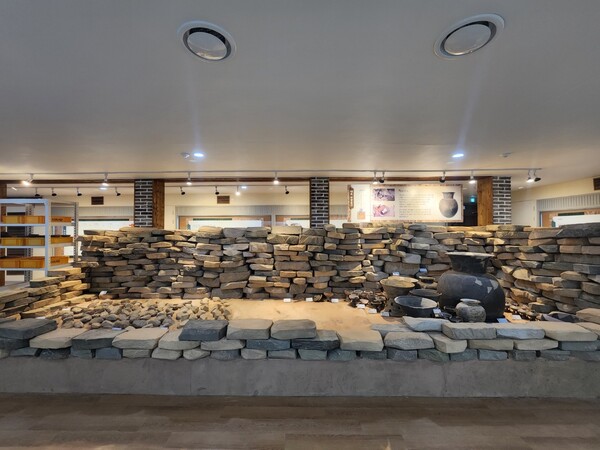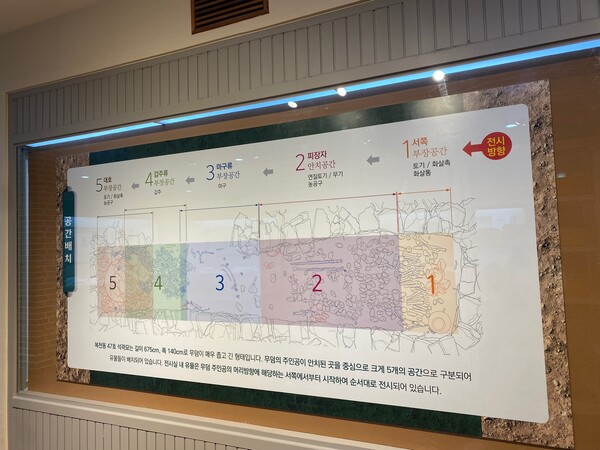The exhibition “Bokcheondong Ancient Tombs No. 47 is opened” is being held in PNU Museum until June 30th, in which visitors can experience the culture back and see tombs from the Gaya period. This exhibition restored Bokcheondong Ancient Tombs No. 47, as big as the real one, and will show all about 400 pieces of dug up artifacts.
Bokcheondong Ancient Tombs, located in Bokcheondong, Dongrae, Busan, is an archaeological site where there are tombs of upper class members of Gaya between the three ancient Korean kingdoms. Tomb No. 47 is the tomb of Gaya’s leader who had lived in Busan in the late 5th century when the three countries fought wars and exchanged frequently. From 1980 to 2008, the remains were discovered eight times, and Pusan Nation University (PNU) was in charge of the first to fourth excavations. The exhibition is about tomb No. 47, which was dug up during the third excavation.

The excavation gave vital sources to the restoration of ancient Gaya history. Due to the lack of records, it's essential to understand remains and relics for restoring them. Tomb No. 47 was damaged intentionally due to the installation of residences and drain pipes. However, many kinds of remains were discovered in original places, such as gold earrings in tombs, big engraved swords, bits, saddles, horses' masks, and armor. A museum official in PNU said that as a result of remains analysis along with the explored sites, we could nearly figure out funeral customs from ancient Gaya”.

In the exhibition, the tombs were made up of real size, and the excavated sites of remains were originally restored so visitors can vividly experience them. Along the path, which is remarked in the exhibition, visitors could see all the remains from tombs No. 47 at the original excavated sites. It is different compared to other exhibitions which select valuable remains. Kim Sung-Ho (assistant, PNU Museum) said, “I recommend that you focus on the entire tombs rather than specific ones, know which remains are dug, and infer how the tomb owners, people who built tombs and buried relics, and held a ritual thought”.
In the entrance, stones that are piled up one by one neatly on the wall attracted attention. The tomb No. 47 is a stone-lined tomb with four walls and lids made of stone, breaking away from tombs made with wood. Therefore, the entrance is decorated with stones to look magnificent.
Gaya, called the kingdom of iron, mainly left behind iron relics. We could hardly identify most of them due to corrosion of the appearance and patterns. Therefore, the museum allowed visitors to observe the patterns which couldn't be seen through CT scanning of relics.
On one side of the exhibition, the relics excavation experience sounds interesting. The visitors become archeologists, excavate and gather relics, and restore the piece of them that each person dug. Additionally, the visitors can draw relics using tools such as a set square. Through this experience, visitors who learn about relics for the first time will become familiar with the contents.

Kim Du-Cheol (Director, PNU Museum) said, “This special exhibition is an opportunity to share research progress for long periods with the public and following generations. Especially, I hope that this exhibition familiarizes visitors who are not used to an excavation research report with the substance, so it makes them inspired and concerned about our history.”
Reporter Kim Hyun-Hee
Translated by Park Yeon-Hee

